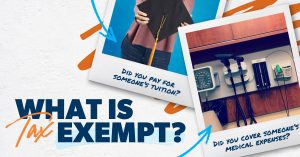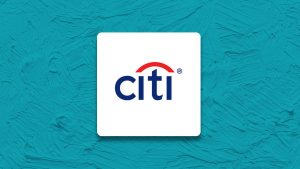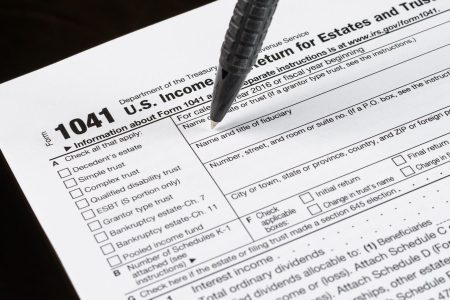Depending on what happens on appeal, the government’s recent victory in a dispute concerning the codified economic substance doctrine could have major consequences for transfer pricing.
To the surprise of many observers, a U.S. district court that had invalidated the temporary section 245A regulations in 2022 granted the government’s motion for summary judgment in Liberty Global Inc. v. United States, No. 1:20-cv-03501 (D. Colo. 2023). The district court order, issued by Judge R. Brooke Jackson of the U.S. District Court for the District of Colorado, endorsed an expansive interpretation of the economic substance doctrine codified in section 7701(o).
The decision, which Liberty Global almost immediately appealed to the Tenth Circuit, has rattled tax advisers and multinationals and led to predictions that the economic substance doctrine will become a recurring feature in transfer pricing disputes.
As a non-textualist, judicially invented antiavoidance measure, the economic substance doctrine has always been controversial, and it remained so after its codification in 2010. But the controversy only intensified after the IRS’s Large Business and International Division issued an April 2022 memorandum (LB&I-04-0422-0014) on section 7701(o) enforcement. The memorandum lifted administrative restrictions on economic substance arguments by abandoning LB&I’s previous policy requiring executive-level approval.
Even before the LB&I memorandum’s release, the government’s reliance on the judicial economic substance doctrine instead of section 482 as the basis for its primary argument in Perrigo v. United States raised eyebrows and drew strenuous taxpayer objections. But the furor over the economic substance doctrine has reached a fever pitch since the government’s win in Liberty Global. According to one prominent commentator on the subject, Liberty Global is “by far the scariest [economic substance doctrine] opinion of recent times and shows a Justice Department unleashed from the historic norms of the income tax.”
Contradiction or Difference?
It’s undeniable that the economic substance doctrine steps on transfer pricing’s toes to some extent. According to the 2022 LB&I memorandum, one factor that could suggest a lack of economic substance is that the “transaction is not at arm’s length with unrelated third parties.” Whenever this is the case, the transaction or arrangement will necessarily be subject to section 482 and section 7701(o). Although similar considerations may be relevant in both contexts, the standards imposed by the two sections are distinct, and there are no coordinating provisions to align them.
One potential source of friction is that the section 482 regulations, unlike the economic substance doctrine, allow recharacterization only as a last resort. The general rule under reg. section 1.482-1(d)(3)(ii)(B)(1) and -1(f)(2)(ii) is that the IRS will respect controlled transactions as structured by the taxpayer and limit its scrutiny to pricing. Although the exception to the rule is for structures that lack “economic substance,” the section 482 regulations’ understanding of the concept doesn’t neatly align with the two-prong economic substance test under section 7701(o).
The section 482 regulations don’t spend much time dealing with the subject, which isn’t surprising given their almost exclusive focus on pricing. They don’t even define economic substance, relying instead on examples to illustrate the concept.
The clearest guidance on economic substance in the section 482 regulations concerns the allocation of risk. All ex-post contractual risk allocations lack economic substance under reg. section 1.482-1(d)(3)(iii)(B), and examples 2 and 4 in reg. section 1.482-1(d)(3)(iii)(C) indicate that allocations of risk generally must also be consistent with the parties’ ability to absorb losses and their conduct over time. This means a distributor with insufficient capital to absorb potential losses cannot bear market risk (Example 2) and a foreign parent can’t bear U.S. product liability risk when its U.S. subsidiary covers any successful product liability claims (Example 4).
Things are murkier for other transactional terms. Reg. section 1.482-1(d)(3)(ii)(B) and the examples in reg. section 1.482-1(d)(3)(ii)(C) clarify that transferring valuable intangible property and performing incremental functions with no prospect of any current or future commercial benefit lack economic substance. However, these examples are too extreme to be of much use in most cases.
Reg. section 1.482-4(f)(3)(i)(A)’s reference to economic substance is singularly unhelpful. It states that the parties’ legal ownership rights dictate intangible property ownership “unless such ownership is inconsistent with the economic substance of the underlying transactions.” Nothing in reg. section 1.482-4(f)(3)(i) or in its examples specifies the economic substance threshold for intangible ownership or identifies features that could indicate a lack of substance.
It’s hard to reverse-engineer a coherent definition from these illustrations and examples. But the unifying theme may be that practices that would generally be irrational, implausible, ultra vires, or fraudulent in arm’s-length dealings flunk the test. Giving valuable assets away or performing functions for free, flouting or backdating an intercompany contract, or assuming the risk of losses that could wipe out the company’s capitalization all fall within this category.
There is some overlap between the section 482 regulations’ concept of economic substance and the analysis required by section 7701(o): Ex-post risk allocations, for example, artificially eliminate the purported risk bearer’s potential loss, and gratuitous functional contributions or asset transfers offer no meaningful nontax profit potential. Both section 7701(o)(2) and the LB&I memorandum recognize the relevance of nontax profit potential to the economic substance doctrine test, and the memorandum cites artificial limitations on gain or loss as possible signs that the transaction lacks substance.
However, most of the section 482 regulations’ examples of arrangements that lack economic substance have no clear counterpart in section 7701(o) or on the LB&I memorandum’s list. This isn’t particularly surprising. The economic substance doctrine’s objective is to deny taxpayers benefits that Congress didn’t intend, not to enforce the arm’s-length standard. And factors relevant to tax parity and arm’s-length pricing may not be particularly relevant to the assessment of nontax purpose and effect required by section 7701(o).
The difference between section 482 and section 7701(o) is even starker when viewed from the other direction. The focus of the section 482 regulations is on arm’s-length pricing, not the taxpayer’s purpose or the magnitude of nontax benefits compared with tax benefits. Neither section 7701(o)(1)(A)’s requirement that the transaction have a meaningful nontax economic effect, nor section 7701(o)(1)(B)’s condition requiring a substantial nontax purpose has any counterpart in the section 482 regulations. If they are priced at arm’s length, even purely tax-motivated transactions with no significant nontax effects can, in principle, comply with section 482.
In fact, the section 482 regulations tacitly confirm the legitimacy of a class of arrangements that could easily run afoul of section 7701(o)’s economic substance test: Cost-sharing arrangements (CSAs) between a U.S. parent and a low-taxed foreign cash box in which the parent continues to perform all intangible development activities in the United States. The income method was specifically designed to handle these kinds of arrangements, and a taxpayer that properly applies the method in accordance with reg. section 1.482-7(g)(4) can generally avoid a section 482 allocation as long as periodic adjustments don’t apply.
The development activities carried out under the CSA obviously have economic substance under section 7701(o), but does the CSA? Maybe, maybe not. It’s unclear how incorporating, capitalizing, and entering a CSA with a foreign cash box that contributes nothing to intangible development other than quarterly cost-sharing payments “changes in a meaningful way (apart from Federal income tax effects) the taxpayer’s economic position” or serves “a substantial purpose (apart from Federal income tax effects).”
Opening the Floodgates?
When the transaction at issue is a CSA with a foreign cash box (or one of many other tax-motivated business restructuring schemes), what started as a difference between two distinct but partially overlapping provisions begins to resemble a contradiction for those on the wrong end of it. Referring to the judicial doctrine in a case that isn’t subject to section 7701(o), Perrigo’s June 2019 motion for summary judgment unsuccessfully urged the court to throw out the government’s economic substance argument and decide the case solely based on section 482:
Here, the precise pricing rules of section 482 and the regulations thereunder provide the entire analytical framework needed to evaluate Perrigo’s intercompany transactions related to omeprazole during the tax years at issue, and those rules should be applied in lieu of common law doctrines.
In its motion, Perrigo argued that the section 482 regulations are more refined than the economic substance sledgehammer and that the latter cannot be invoked by the IRS when there is a statutory provision that already addresses the issue. The company also claimed that the weight of judicial precedent prefers section 482 over the judicial economic substance doctrine, citing Rubin v. Commissioner, 429 F.2d 650 (2d Cir. 1970), Hospital Corp. of America v. Commissioner, 81 T.C. 520 (1983), United Parcel Service of America Inc. v. Commissioner, 254 F.3D 1014 (11th Cir. 2001), and others.
Perrigo pressed the same argument in its 2021 opening post-trial brief:
The sole, true task for the Court, then, is to apply the arm’s length standard of section 482 and determine the appropriate price for that transfer. That is it. Not a simple task, admittedly, but not so complex as to require the application of common law principles such as “sham transaction” and “economic substance” and “business purpose.” Those broad concepts have no place in this inquiry — an inquiry for which the statutory and regulatory constructs of section 482 are precisely designed.
The company again argued that “Congress and Treasury have already given the IRS and the courts all the tools they need” to decide the case with section 482 and the corresponding regulations.
Perrigo’s preference for the section 482 regulations is understandable, and its policy argument isn’t entirely off base. Whether the source of the economic substance doctrine is judicial precedent or the IRC, applying disparate standards without any coordinating mechanism could upset a meticulously crafted system of regulatory checks and balances developed under the rubric of section 482. This is not an ideal state of affairs, and it’s understandable that taxpayers and tax advisers are frustrated by it.
But the law is the law, whether it represents sound policy or not. And even if Perrigo’s objections to the judicial doctrine were sound, it’s hard to see how its arguments could hold up in cases subject to section 7701(o). All instances cited by Perrigo in which courts tossed the IRS’s economic substance arguments aside because they liked section 482 better predate Congress’s codification of the economic substance doctrine.
Discarding a controversial judicial doctrine is one thing; ignoring a subsection of the IRC is another. Now that the economic substance doctrine is on the books as part of the IRC, judges’ discretion to reject it based on their individual preferences is limited. There is no judicial precedent to suggest that transactions subject to section 482 are exempt from section 7701(o), and it’s unclear how any court could reach that conclusion under current law.
This is where the fate of Liberty Global’s appeal could become critically important. Now that section 7701(o) compels judges to consider the economic substance doctrine, there must be some statutory basis for carving out transactions subject to section 482. The only plausible candidate is the prefatory clause in section 7701(o)(1) that precedes the two-part conjunctive test:
(1) Application of doctrine. In the case of any transaction to which the economic substance doctrine is relevant, such transaction shall be treated as having economic substance only if —
(A) the transaction changes in a meaningful way (apart from Federal income tax effects) the taxpayer’s economic position, and
(B) the taxpayer has a substantial purpose (apart from Federal income tax effects) for entering into such transaction.
[Emphasis added.]
Liberty Global’s principal argument against the government’s motion for summary judgment was that this prefatory language establishes a relevance filter, which excluded the transaction at issue in the case. As summarized in the district court order:
[Liberty Global] would have the Court view the prefatory clause as an instruction to conduct a threshold analysis into whether the doctrine is “relevant” to the transaction at issue, and then only if the threshold is met, to continue into the two-pronged inquiry set out in the operative clause of the statute.
This purported relevance threshold could be the missing statutory basis for excluding controlled transactions subject to section 482 from the scope of section 7701(o). Taxpayers that still want to make a Perrigo-like argument after section 7701(o) took effect could try to argue that the existence of a sophisticated transfer pricing regulatory scheme renders the economic substance doctrine irrelevant under section 7701(o)(1).
Liberty Global is now on appeal, and the district court’s holding will remain tentative unless and until it is affirmed by the Tenth Circuit. However, the company’s argument failed its first test. Based on his parsing of the text, assessment of legislative intent, and review of circuit precedent, Jackson rejected Liberty Global’s relevance filter theory. As Jackson’s order explains:
the doctrine’s relevance is coextensive with the statute’s test for economic substance, provided by the operative clause. . . . At the risk of tautology, I proceed with the conclusion that the economic substance doctrine applies when a transaction lacks economic substance.
If the Tenth Circuit and other circuits share Jackson’s assessment, it would leave taxpayers without any apparent statutory basis for insisting on a section 482 carveout from section 7701(o). With no independent relevance screen, controlled transactions would be subject to independent scrutiny under both sections. Desirable or not, the duplication and tension between section 482 and the economic substance doctrine would be unavoidable.
Another important issue concerns what the district court order refers to as the “unit of analysis.” Whether the economic substance doctrine test applies to the arrangement as a whole or to each constituent step can have major consequences. Although this wasn’t the case in Liberty Global, transactions are generally more likely to survive the economic substance test when assessed in the aggregate.
For example, establishing a low-taxed offshore subsidiary to perform real manufacturing activities would generally have economic substance in the aggregate. But the decision to organize or capitalize the subsidiary in a specific way, or to insert particular terms into an intercompany contract, may not.
The district court order in Liberty Global assessed the arrangement in the aggregate. However, Jackson reasoned that courts have discretion to determine the appropriate level of aggregation based on the specific facts and circumstances. Citing the House report (H.R. 111-443) on the Health Care and Education Reconciliation Act of 2010, Jackson held that “courts may ‘aggregate, disaggregate, or otherwise recharacterize a transaction when applying the doctrine’ to effectuate that purpose.” According to Jackson, a more rigid approach would frustrate the objective of identifying arrangements that serve no purpose other than to generate tax benefits, and thereby violate legislative intent.
This interpretation may also be scrutinized by the Tenth Circuit on appeal. But if it stands, it could allow the economic substance doctrine to further encroach on territory traditionally associated with transfer pricing.
If a court can choose to examine an arrangement at any level it sees fit, a CSA or restructuring that would pass section 7701(o)’s test in the aggregate could be swept up because of individual steps that flunk the test. For example, any substantial intangible development activities carried out under a CSA would have economic substance, but the decision to set up a cash box that makes no operational contributions other than cutting checks may not. The result could be that arrangements, including some that have long been accepted by Treasury and the IRS in the transfer pricing context, could be challenged under section 7701(o) and recharacterized in ways the section 482 regulations would never allow.
Careful What You Wish For
Pyrrhus of Epirus, the ancient Greek regional king and eponym of the Pyrrhic victory, had just scored a pair of impressive tactical victories in 280 and 279 BCE over defending Roman armies during his invasion of Italy. After being congratulated for his success, he reportedly remarked that “if we are victorious in one more battle with the Romans, we shall be utterly ruined.” Although the Romans had suffered heavier casualties in each battle, they could easily replace their losses while Pyrrhus could not.
Collectively, the multinationals seeking to invalidate or otherwise neutralize the section 482 regulations in litigation may be figuratively invading Italy. If they succeed in gutting key regulatory provisions in cases like 3M Co. v. Commissioner, 160 T.C. No. 3 (2023), Abbott Laboratories v. Commissioner, No. 20227-23, or Facebook v. Commissioner, No. 21959-16, they may leave the IRS with little choice but to increasingly rely on the crude economic substance doctrine bludgeon instead of the more nuanced and restrained section 482 regulations. Victories in these critical battles with the IRS could ultimately leave taxpayers, like Pyrrhus, utterly ruined.
The procedural history in Liberty Global illustrates the risk. The government initially made its case based on temporary regulations issued under section 245A. Continuing a worrying trend (though arguably on more defensible grounds), the district court invalidated the temporary regulations for violating the Administrative Procedure Act in Liberty Global Inc. v. United States, No. 1:20-cv-03501 (D. Colo. 2022). In the wake of this successful reg validity challenge, the district court’s order granting the government summary judgment on economic substance grounds must have come as an unpleasant surprise to Liberty Global. If the Tenth Circuit affirms, it could establish a blueprint for the IRS to win cases under section 7701(o) that it may have lost under section 482.
The prospect that a hollowed-out section 482 regulatory scheme could force the IRS to routinely invoke the economic substance doctrine in examinations, appeals, and litigation should worry multinationals. Taxpayers and their legal representatives have routinely excoriated parts of the section 482 regulations they don’t like in cases like 3M, Facebook, and Altera Corp. v. Commissioner, 926 F.3d 1061 (2019), rev’g 145 T.C. 91 (2015). However, as Perrigo’s strenuous effort to have the case decided strictly on section 482 grounds attests, the transfer pricing regulations reflect a decidedly lenient approach compared with the alternatives.
Do taxpayers really want to live in a world in which the section 482 regulations are invalidated out of existence, forcing the IRS to exercise the full extent of its authority under two sweeping statutory provisions? They shouldn’t. The section 482 regulations’ strict limits on recharacterization, their relative objectivity, and their tolerant approach to tax-motivated contractual and ownership arrangements are conspicuously absent from section 7701(o). Some of the CSAs and restructurings that comply with section 482 — and thus avoid any IRS adjustment — could become vulnerable under section 7701(o), which imposes a test that cannot be satisfied simply by arm’s-length pricing.
In a perfect world, Treasury and the IRS would probably exercise their authority to issue regulations that coordinate sections 482 and 7701(o). But in a perfect world, taxpayers wouldn’t bombard every regulation with dubious validity challenges, and courts would consistently reject flawed arguments. While Perrigo and other major section 482 cases are still pending, Treasury and the IRS would probably be wise to sit back and preserve their future options.
Of course, even a future world in which the economic substance doctrine partially displaces section 482 as the IRS’s go-to enforcement instrument wouldn’t give the IRS unchecked authority to recharacterize whatever it doesn’t like. The analysis under section 7701(o) will generally be factually intensive, and affected taxpayers are sure to vigorously contest the IRS’s factual findings. Some even consider section 7701(o) — or at least the IRS’s interpretation of it — to be an enticing target for a conservative Supreme Court intent on weakening the U.S. administrative state.
Maybe they’re right. However, it’s highly unlikely that this would be the end of the matter: Congress, as it did in the Tax Reform Act of 1986 and the 2017 Tax Cuts and Jobs Act, has a way of belatedly responding when courts construe legislation in a way that frustrates its purpose. Taxpayers outraged with section 7701(o) today could ultimately find themselves subject to an all-encompassing general antiavoidance rule. Most would then probably long for the days when it was enough to apply the income method correctly, share stock-based compensation, and pay tax on some blocked royalty income.
Read the full article here










